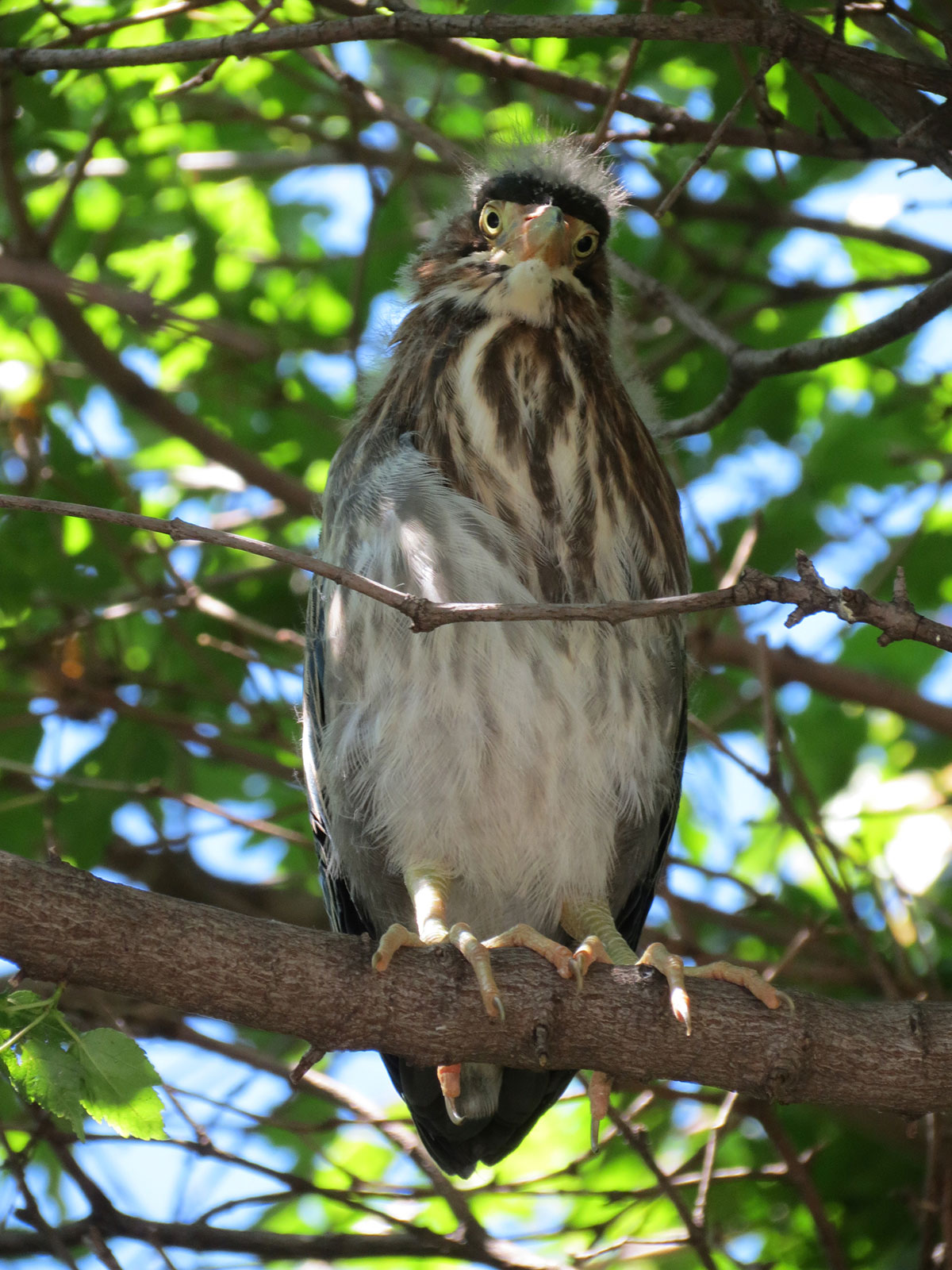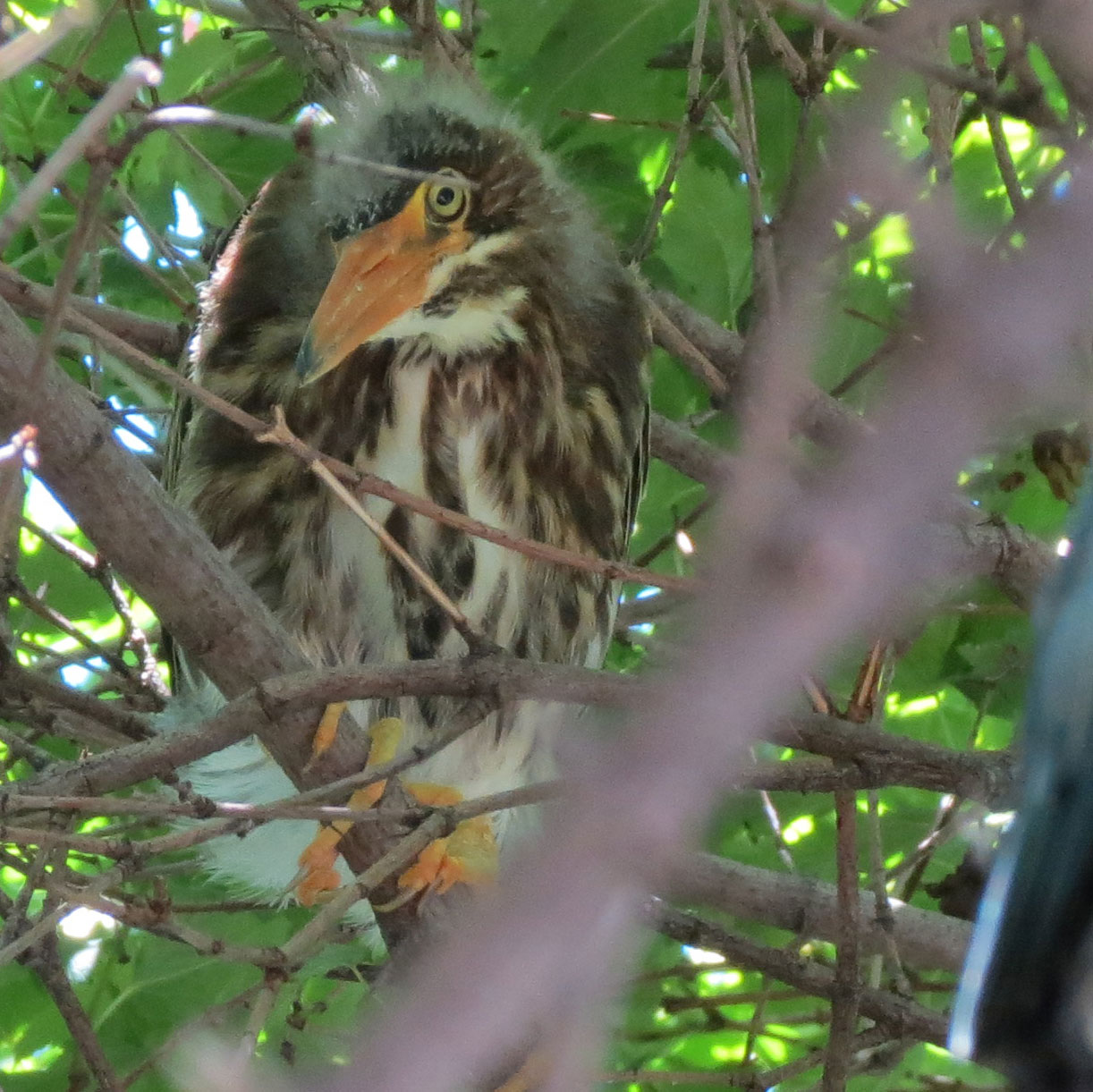
Green Heron (Butorides virescens)
The green heron (Butorides virescens) is a small heron of North and Central America. It is a relatively small bird. The adult body length is about 17 inches. Adult females tend to be shorter than males.
These birds are quite the fisherman. They will patiently stay crouched at the water’s edge to snatch the fish right out of the water. If the fish aren’t coming around on their own accord, the green heron has ways of inviting their dinner to join them.
The green heron is one of the few tool-using bird species. It cleverly creates fishing lures from whatever objects it can find nearby: bread crumbs, insects, earthworms, twigs and feathers, to name a few possibilities. Once it spots an object to use for bait it drops the item on the surface of the water and then it watches and waits.

The adults often have a glossy, greenish-black cap, a greenish back and wings that are grey-black blending into either green or blue, a chestnut colored neck with a white line down the front, a grey underbelly and short yellow legs. The bill is daggerlike, long with a sharp point. The female coloring tends to be duller and the plumage lighter than males.
Juveniles also have duller coloring and they are streaked brown and white down their head sides, neck and underparts. Their back is tan-splotched along with their wind coverts. Their legs and bill are a greenish-yellow color.
The bird’s call is loud and sudden: kyow. It can also make a series of more subdued yuk calls. During times of courtship the male gives a raah-rahh call while leaving his bill wide open, in addition to making wingbeats and whoom-whoom-whoom calls as he flys around the female. Sometimes during this flight he also calls roo-roo to the female before landing.